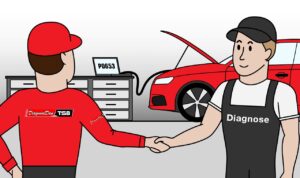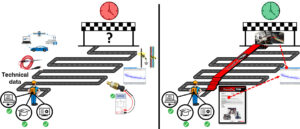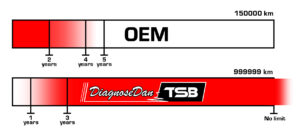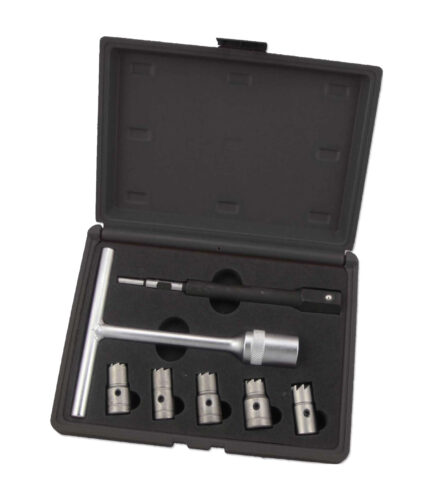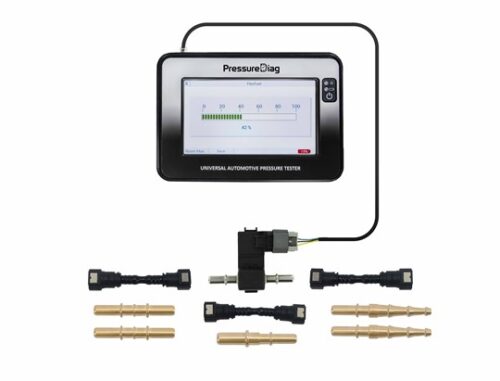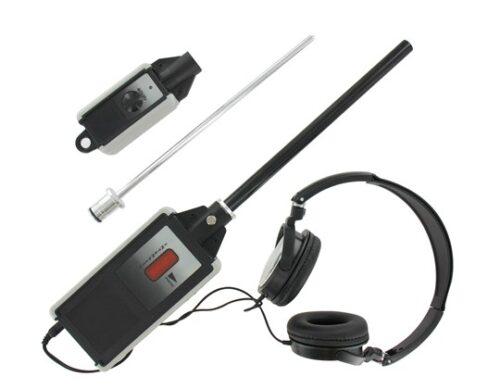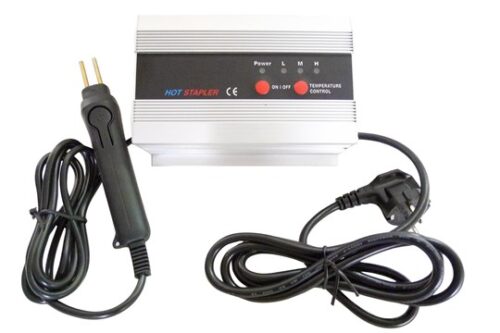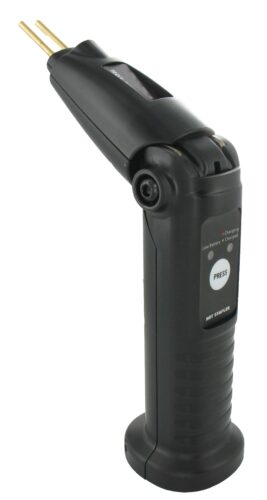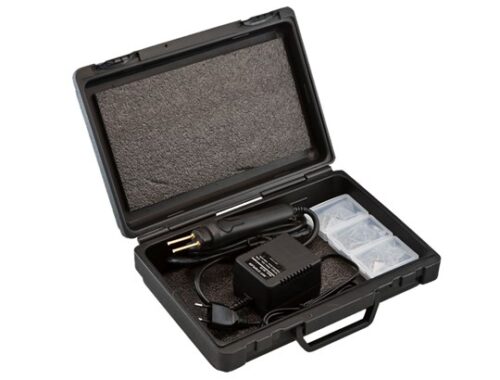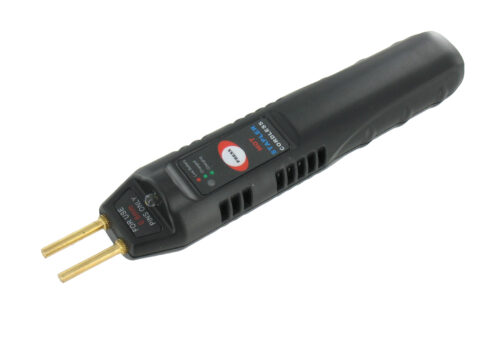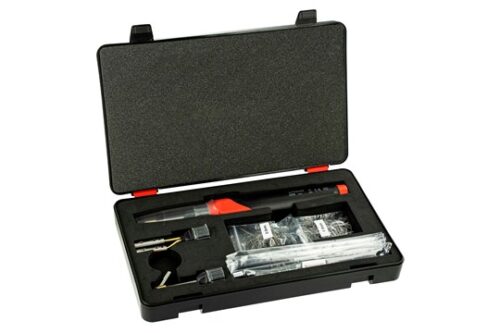Index:
-
Definition of TSBs
-
Various names to OEM TSBs
-
Definition of a Silver bullet
-
OEM TSBs
-
Aftermarket TSBs
-
TSBs based on case studies from professional workshops & trusted technicians
Definition of TSBs
TSBs can be a valuable resource for repair shops, helping them to more quickly and accurately diagnose and repair vehicles, leading to more satisfied customers and better business outcomes.
-
A Technical Service Bulletin (TSB) is a document that provides additional information or guidance to a manufacturer’s authorized repair technicians. It may address a specific problem that has been reported with a particular make or model of vehicle, or it may provide instructions for performing a certain repair procedure.
- While a TSB can certainly be a helpful resource for repair technicians, it is important to remember that it is not intended to be a comprehensive repair procedure that will necessarily solve every problem related to a particular issue. Rather, a TSB is meant to provide additional information that can assist repair technicians in diagnosing and addressing specific issues that have been identified.
- Furthermore, a TSB is not a recall. A recall is a formal process initiated by the manufacturer to address a safety or compliance issue that affects a large number of vehicles. Recalls are typically mandatory and require the manufacturer to provide a fix for the issue free of charge to the affected vehicle owners.
- TSBs may offer portions of a troubleshooting flowchart or a list of common diagnostic steps that can be used to narrow down the cause of a particular problem. This information can be helpful in getting a repair started or in determining the best course of action for addressing a particular issue on a specific model/engine.
- Both OEM and Aftermarket TSBs can apply to multiple vehicles, years, and subsystems that share similar issues or malfunctions.
- TSBs can be created for a variety of reasons, including safety concerns, customer complaints, or changes in part design or manufacturing processes.
- TSBs can be updated as added information is gathered. They may be distributed to repair shops via paid subscription, one-on-one consultations, or targeted information and guidance. Maybe freely disseminated as assistance and information to an ongoing case study.
- Additional reasons for creating TSBs (safety concerns, customer complaints, changes in part design or manufacturing processes)
- In summary, while a TSB can certainly be a helpful resource for repair technicians, it is important to understand its limitations and that it is not meant to be a silver bullet solution to all problems related to a particular issue. A TSB is a document issued by an entity to address specific problems or provide instructions on how to fix certain issues that may arise in our processes while repairing vehicles. It serves as a communication tool between the repair technician who developed the TSB and other repair technicians out in the field, aiming to ensure consistent and effective repairs across our service network.
- Additionally, aftermarket TSBs can provide valuable insights and guidance on how to troubleshoot and repair known issues that may not have been previously addressed as in the exact context of the current repair at hand. These aftermarket TSBs are created by third-party entities, such as automotive groups/forums, repair communities, or independent technical organizations, and they aim to fill the gap left by official manufacturer TSBs. They can serve as a starting point for diagnosing similar faults on a specific car, providing alternative solutions, workarounds, or time-saving shortcuts, AKA Silver Bullets, which have been discovered by other technicians in the field. These insights are based on their experiences and practical knowledge gained from repairing similar issues. Proper research, documentation, and professional judgment should always be exercised when utilizing aftermarket TSBs in the repair process.
Various names for OEM TSBs
Automotive manufacturers may use various names to describe technical service bulletins (TSBs) or similar documents that provide repair or diagnostic information to dealerships and repair shops.
Some of the other names that manufacturers may use include:
- Technical Information Bulletin (TIB)
- Service Information Bulletin (SIB)
- Campaign Bulletin (CB)
- Product Update Bulletin (PUB)
- Warranty Extension Program (WEP)
- Customer Satisfaction Program (CSP)
- Special Service Message (SSM)
- Field Service Action (FSA)
Manufacturers and their synonyms to TSBs:
- Audi: Technical Product Information (TPI)
- BMW: Service solutions
- Cupra: Technical Product Information (TPI)
- Ford: Technical Service Bulletin (TSB)
- Honda: Campaign Bulletins (CP) / Service Bulletins (SB)
- Hyundai/Kia: Technical Service Bulletin (TSB)
- Jaguar: Technical Bulletin (TSB)
- Land Rover: Technical Bulletin (TSB)
- Mazda: Mazda Global Service Support (MGSS)
- Mitsubishi: Technical Service Bulletin (TSB)
- Mercedes-Benz: XENTRY TIPS
- Nissan: Repair & Maintenance Information (RMI)
- Opel/Vauxhall: Technical Service Bulletin (TSB)
- PSA: Technical Service Bulletin (TSB)
- Renault / Dacia: ACTIS Technical Bulletin
- Seat: Technical Product Information (TPI)
- Skoda: Technical Product Information (TPI)
- Suzuki: Technical and Quality (TQ)
- Toyota: Technical Service Bulletin (TSB)
- Volvo: Technical Information Exchange (TIE)
- Volkswagen: Technical Product Information (TPI)
It’s worth noting that the exact terminology used may vary depending on the manufacturer and the country or region in which the vehicle is sold and serviced. However, regardless of the name, these documents typically provide valuable information to help technicians diagnose and repair issues with vehicles, and may be issued for a variety of reasons, such as addressing a known issue, providing updated procedures or specifications, or improving overall vehicle performance.
Definition of a Silver bullet
TSBs can supply a Silver Bullet solution to a complex or recurring problem.
In the automotive repair industry, a “Silver Bullet” is a term used to describe a quick, simple, and effective solution to a complex or difficult problem. The term is often used tongue-in-cheek, as there is rarely a single solution that can address all of the complex and nuanced problems that arise in automotive repair.
Instead, a Silver Bullet may refer to a particular diagnostic or repair tool, technique, or procedure that is particularly effective in addressing a specific problem. For example, a Silver Bullet may refer to a specific diagnostic tool that can quickly identify the root cause of a complex electrical problem, or to a specialized repair procedure that can fix a particularly difficult-to-reach component without requiring extensive disassembly of the vehicle.
While a Silver Bullet may be effective in addressing a particular problem, it’s important to remember that there is no one-size-fits-all solution in the automotive repair industry. As such, it’s important for technicians and mechanics to have a broad range of diagnostic and repair tools and techniques at their disposal, and to be able to adapt their approach to suit the specific needs of each situation.
Types of TSBs (OEM and Aftermarket)
OEM TSBs
• Issued by vehicle manufacturers to their authorized dealerships and service centers.
• Based on Dealer Service Center repairs & testing
• Supply guidance on repairs or updates that are recommended for specific models, years, or production runs
• Covers known problems on cars 0-3 years old (average estimate), since the data needed to create the TSB comes primarily from warranty cases.
• OE Manufacturer Technical Service Bulletins (TSBs) are documents that are issued by the original manufacturer of a vehicle or component to provide guidance to technicians and dealerships on how to address common issues or problems that have been identified with the product. These bulletins are typically based on the manufacturer’s own testing and research, and they are meant to provide authorized technicians with the most up-to-date information on how to diagnose and repair specific issues. These bulletins are often considered the most authoritative source of information for repairing or servicing a vehicle or component and provide guidance on repairs or updates that are recommended for specific models, years, or production runs. Many manufacturers have a rule stating that an OEM TSB takes precedence over Service Information or other forms of Technical Data in the current online portal, printed repair manual, or subscription-based Service Information DVD software. This concise list of Technical Data delivery modes take time to update in printed form, hard copy, or soft copy, which may not become available to the technician for several months, hence allowing a delivery mode of urgent or important updated repair procedures for a whole host of reasons. As a result, technicians must always check for updated TSBs and updated control module flash software as their first step, since a software update is typically developed to realign parameters that may repair a current problem on the affected vehicle. If a TSB provides a different procedure for a repair than what is stated in the Service Information, the technician shall follow the TSB’s guidance. This rule also applies to spare parts, as some manufacturers may have the latest updated part available before it can be found in the OEM spare part catalog. These are also useful for repair shops that specialize in a particular brand or manufacturer.
Important note when following OEM TSBs on cars outside warranty!
The information given in an OEM TSB is made by the same company that produced the car and the problem. It’s important as a technician to always consider if the solution described in the OEM TSB is the most optimal for a car outside warranty.
A cheap solution:
On one side, the car manufacturer could suggest a “cheap” solution that would not last for many years, but just enough to get the car outside warranty. An example of this could be how a car manufacturer made certain guidelines on a well-known engine using a timing belt in oil (wet belt), not to inspect the oil strainer even if the wet belt failed the test of width during inspection. Only if there was a fault code on the oil pressure or customer complaints justifying this. Technicians with awareness of this problem all know that in most cases where the wet belt is too wide, there will also be belt fragments in the oil strainer affecting the oil flow in a negative way. Despite this insight, the warranty would not cover the cost of removing the oil sump and cleaning the oil strainer. Warranty only covered the procedure stated in the OEM TSB and guidelines.
An expensive solution:
On the other side there can be OEM TSBs stating to change expensive electronic components based on almost no or verry limited diagnostics. This could be an inverter or a mechatronic unit. The price of this part is vastly different if it’s a warranty case or if an aftermarket workshop needs to buy this part as OEM part. Here the car manufacturer will make a good profit from the expensive part sale. As an aftermarket workshop it would be worth seeing if the part could instead be remanufactured by trusted companies like Actronics. www.actronics.com
Aftermarket TSBs
• Created by third-party providers rather than the original manufacturer.
• These bulletins are typically based on research, repair, and testing conducted by these third-party organizations. Ideally data from large aftermarket hotline centers.
• Based on case studies from professional workshops & trusted technicians
• Can offer additional information and guidance beyond what is provided by OEMs
• Covers known problems on cars approximately from1 year and till the car is no longer running on the roads in large numbers (approx. 20 years).
• May be updated or revised as latest information is gathered
• Multiple vehicles, years, and subsystems can be affected by TSBs.
• Aftermarket TSBs can be distributed to repair shops in a variety of ways. Some aftermarket TSB providers offer paid subscriptions that provide access to a comprehensive library of TSBs, along with additional resources such as training materials, technical support, and diagnostic tools.
• In some cases, an aftermarket TSB provider may offer TSBs on a one-on-one basis, either for a fee or as part of a consultation or diagnostic service. This approach allows repair shops to get targeted information and guidance on a specific problem or issue, without having to subscribe to a full library of TSBs.
Aftermarket TSBs can offer additional information and guidance beyond what is provided by OEMs.
Aftermarket TSBs may offer alternative solutions to common problems or supply other information beyond what is included in the OE manufacturer’s bulletins. The problem described in the OEM TSB could evolve when the car ages and create a new similar problem. However, since the same problem has evolved, another solution and diagnosis are needed to find and solve the problem. However, because aftermarket TSBs are not produced by the original manufacturer, they may not be as authoritative as the manufacturer’s own bulletins.
It’s worth noting that not all aftermarket TSBs are created equal, and some may be more dependable or trustworthy than others. Before relying on an aftermarket TSB to diagnose or repair a vehicle or component, it’s important to evaluate the source of the bulletin and consider whether the information provided is credible and accurate. If the TSBs are based on one-time cases or shared by users without comparing them to big data, the relevance of the TSB could be low to the majority. It’s important that the TSB provider has a huge database of issues on cars with the age relevant to the customer, to compare if it’s a frequent problem and to get the data needed to write the TSB. Aftermarket Hotline centers such are the preferred data provider for this. Elektro Partner APS is one of the biggest aftermarket hotline centers in Europe and is the company behind DDTSB.
Additionally, many manufacturers offer their own approved aftermarket parts and repair solutions, so it’s worth checking with the manufacturer before relying on an aftermarket TSB to ensure that any repairs or modifications made to the vehicle or component follow the manufacturer’s guidelines and specifications.
In DDTSB you will find aftermarket TSBs.
TSBs are based on case studies from professional workshops & trusted technicians
TSBs, whether they are OE Manufacturer TSBs or Aftermarket TSBs, are often based on actual repair case studies conducted by professional workshops. These case studies typically include detailed information on the diagnosis of the problem, including the root cause and any related issues that may have contributed to the problem. They may also include information on which parts failed, as well as pictures or diagrams showing the affected areas.
Once the diagnosis has been made, the workshop will typically replace any failed parts with new ones and conduct extensive testing to verify that the repair was properly completed. This information is often included in the TSB, providing a valuable resource for technicians and mechanics who are working on similar problems.
It’s worth noting that while case study-based TSBs can supply valuable information for diagnosing and repairing specific problems, they may not be applicable to all situations. Every vehicle and component are unique, and a problem that presents itself in one case study may have different underlying causes or contributing factors in another situation. As such, it’s important to approach TSBs with a critical eye, and use them as one resource among many when diagnosing and repairing vehicle and component issues.
One important thing to note about TSBs is that they can provide valuable information for diagnosing and repairing specific problems that may occur across multiple vehicles, years, engines, and subsystems.
It’s worth noting that case study-based TSBs may not be applicable to all situations. Every vehicle and component are unique, and a problem that presents itself in one case study may have different underlying causes or contributing factors in another situation. As such, it’s important to approach TSBs with a critical eye, and use them as one resource among many when diagnosing and repairing vehicle and component issues. It’s important to keep in mind that OEM repair solutions are developed by the same company that may have to cover the cost of the repair. This means that the suggested repair could be aimed at providing a cost-effective solution to keep the car running on the road until the warranty period ends. However, it’s also worth considering that the OEM solution could have a sales component in mind, with the suggested repair aimed at promoting the up sale of a particular part or service, to include additional labor charges, such as a vehicle health check, video check, or overdue scheduled maintenance. In the aftermarket, it’s crucial to carefully evaluate and consider all perspectives when determining the optimal repair solution that serves the best interests of the customer in each situation.
An OE Manufacturer TSB may address a problem that has been identified across multiple vehicle models, years, and engine types. In such cases, the TSB may provide guidance on how to diagnose and repair the problem across all affected vehicles, engines, and subsystems. Similarly, an Aftermarket TSB may provide alternative solutions to common problems that can be applied across multiple vehicles, years, and engine types.
Overall, TSBs can provide valuable guidance for technicians and mechanics when diagnosing and repairing vehicle and component issues. However, it’s important to approach them critically, and to use them as one resource among many when conducting repairs.
Both OEM and Aftermarket TSBs can be updated from time to time to reflect newly identified malfunctions, changes in diagnostic approaches, and updates on required parts. In some cases, no parts may be required at all, as the issue may be as simple as a broken wire or a connector that was not properly seated due to previous maintenance at another workshop.
As new case studies are conducted, TSBs may be updated to reflect the latest diagnostic and repair approaches for common problems. For example, a TSB that was originally issued to address a particular issue may be updated to include additional diagnostic steps or to recommend the use of various parts based on newly identified contributing factors.
In some cases, an updated TSB may be issued to replace an earlier version that is no longer accurate or relevant. This may occur if added information becomes known that changes the recommended diagnostic or repair approach, or if parts or components are updated or replaced.
It’s important to approach them critically and to stay up to date with the latest information as it becomes available. While TSBs can provide a starting point for diagnosing and repairing common problems, every vehicle and component is unique and may require a customized diagnostic and repair approach. As such, it’s important to use TSBs as one resource among many when conducting repairs.
